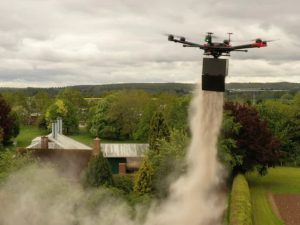
Jehovah’s Witnesses’ and aerial ashes scattering ashes service
Jehovah’s Witnesses’ and aerial ashes scattering ashes service beliefts are rooted in specific interpretations of Scripture that guide their practices, particularly regarding the treatment of the dead. Jehovah’s Witnesses generally believe in the resurrection rather than the immortality of the soul, and they emphasize that the Bible does not prescribe a specific method for handling remains.
1. Respect for the Body but No Specific Mandate on Burial
The Bible teaches that the body returns to dust after death, as seen in Genesis 3:19: “For dust you are and to dust you will return.” This indicates that the physical body, after death, is subject to decay and is no longer of significance to the individual who has died. The Bible does not explicitly command a specific way to handle remains, suggesting that the method of handling them could be a matter of personal or cultural choice.
2. Flexibility in Burial Practices
Ecclesiastes 12:7 states, “Then the dust will return to the earth as it was, and the spirit will return to God who gave it.” This verse can be interpreted to mean that once a person has died, their spirit returns to God, and the body returns to the earth in one way or another. The Bible doesn’t mandate how this return to dust should happen, so the method of scattering ashes, even by drone, could be seen as a modern way of fulfilling this return to the earth.
3. Symbolic Acts of Returning to the Earth
In Deuteronomy 34:6, it is mentioned that God Himself buried Moses, but the exact location was kept secret. This might be seen as showing that the specific place or manner of burial isn’t what’s most important. What matters is that the body returns to the earth. Scattering ashes by drone over a significant area could be viewed as a symbolic act of returning the deceased to nature, in line with this principle.
4. Technological Advancements in Modern Times
There’s no direct Biblical reference to modern technology, but Ecclesiastes 3:1 says, “There is a time for everything, and a season for every activity under the heavens.” One might argue that the use of modern technology, such as drones, to scatter ashes is simply a contemporary method that can serve the same purpose as more traditional methods, respecting the dead and their return to the earth.
5. Respect for Personal Wishes
The Bible emphasizes the importance of showing love and respect for others. Philippians 2:4 encourages us to “look not only to your own interests, but also to the interests of others.” If the deceased or their loved ones have expressed a wish for their ashes to be scattered in a specific way, honoring those wishes can be an expression of love and respect.
6. Focus on the Hope of Resurrection
Finally, the central hope in Jehovah’s Witnesses’ belief system is the resurrection (John 5:28-29). Since the resurrection is about God’s power to restore life, not the preservation of the physical body, the method of scattering ashes could be seen as a non-essential detail in light of the greater hope of resurrection.
Conclusion
While Jehovah’s Witnesses hold to specific interpretations of Scripture, this argument is framed around the idea that the Bible does not explicitly dictate how remains should be handled after death. Therefore, using a drone to scatter ashes could be seen as a respectful and modern way to honor the deceased while still aligning with Biblical principles. It’s important to approach this topic with sensitivity and respect for the deeply held beliefs of Jehovah’s Witnesses.


